The explanation by @Andro Selva is correct and there is not much to be done about it. Frustratingly, things get better for API 24 and later with the inclusion of flags in the call
Spanned fromHtml (String source,
int flags,
Html.ImageGetter imageGetter,
Html.TagHandler tagHandler);
and I suspect the FROM_HTML_SEPARATOR_LINE_BREAK_PARAGRAPH flag will reduce the double "\n\n" of the standard paragraph termination to that of the single "\n" of a line break
Given the history of Android versions out there ~I can't afford to write software for Android API 24+ exclusively! So... I found a kludge solution with the inclusion of 2 extra custom tags.
1. <scale factor="x.xx">... </scale>
2. <default>... </default>
both invoke the RelativeSizeSpan class through this method
private void ProcessRelativeSizeTag(float scalefactor, boolean opening, Editable output) {
int len = output.length();
if (opening) {
System.out.println("scalefactor open: " + scalefactor);
output.setSpan(new RelativeSizeSpan(scalefactor), len, len,
Spannable.SPAN_MARK_MARK);
} else {
Object obj = getLast(output, RelativeSizeSpan.class);
int where = output.getSpanStart(obj);
scalefactor = ((RelativeSizeSpan)obj).getSizeChange();
output.removeSpan(obj);
System.out.println("scalefactor close: " + scalefactor);
if (where != len) {
output.setSpan(new RelativeSizeSpan(scalefactor), where, len,
Spannable.SPAN_EXCLUSIVE_EXCLUSIVE);
}
}
}
which is called from the custom TagHandler supplied to the Html.fromHtml method, viz:
private static class CustomTagHandler implements Html.TagHandler {
private void ProcessRelativeSizeTag(float scalefactor, boolean opening, Editable output) {
int len = output.length();
if (opening) {
//mSizeStack.push(scalefactor);
System.out.println("scalefactor open: " + scalefactor);
output.setSpan(new RelativeSizeSpan(scalefactor), len, len,
Spannable.SPAN_MARK_MARK);
} else {
Object obj = getLast(output, RelativeSizeSpan.class);
int where = output.getSpanStart(obj);
scalefactor = ((RelativeSizeSpan)obj).getSizeChange();
output.removeSpan(obj);
//scalefactor = (float)mSizeStack.pop();
System.out.println("scalefactor close: " + scalefactor);
if (where != len) {
output.setSpan(new RelativeSizeSpan(scalefactor), where, len,
Spannable.SPAN_EXCLUSIVE_EXCLUSIVE);
}
}
}
...
final HashMap<String, String> mAttributes = new HashMap<>();
@Override
public void handleTag(boolean opening, String tag, Editable output, XMLReader xmlReader) {
String Attr;
processAttributes(xmlReader);
if ("default".equalsIgnoreCase(tag)) {
ProcessRelativeSizeTag(mDefaultTextSize, opening, output);
return;
}
if ("scale".equalsIgnoreCase(tag)) {
Attr = mAttributes.get("factor");
if (Attr != null && !Attr.isEmpty()) {
float factor = parseFloat(Attr);
if (factor > 0)
ProcessRelativeSizeTag(factor, opening, output);
}
return;
...
}
}
To use, I set the text size of the Textview object to 1. That is, 1 pixel! I then set the required true text size required in the variable mDefaultTextSize. I have all the Html functionality inside an htmlTextView which extends TextView as:
public class htmlTextView extends AppCompatTextView {
static Typeface mLogo;
static Typeface mGAMZ;
static Typeface mBrush;
static Typeface mStandard;
int GS_PAINTFLAGS = FILTER_BITMAP_FLAG | ANTI_ALIAS_FLAG | SUBPIXEL_TEXT_FLAG | HINTING_ON;
static float mDefaultTextSize;
static Typeface mDefaultTypeface;
etc
}
which includes the public method
public void setDefaultTextMetrics(String face, float defaultTextSize) {
mDefaultTypeface = mStandard;
if (face != null) {
if ("gamz".equalsIgnoreCase(face)) {
mDefaultTypeface = mGAMZ;
} else {
if ("brush".equalsIgnoreCase(face)) {
mDefaultTypeface = mBrush;
}
}
}
setTypeface(mDefaultTypeface);
setTextSize(1);
mDefaultTextSize = defaultTextSize;
}
A simple ((htmlTextView)tv).setDefaultTextMetrics(null, 30); call sets my htmlTextView to use my standard typeface as default with a text size of 30.
Then when I give it this example to use in fromHtml:
<string name="htmlqwert">
<![CDATA[
<p><default><scale factor="1.5"><box> qwertQWERT </box></scale></default></p>
<p><default><scale factor="1.5"><box> qwertQWERT </box></scale></default></p>
<p><default><scale factor="1.5"><box> qwertQWERT </box></scale></default></p>
<p><default><scale factor="1.5"><box> qwertQWERT </box></scale></default></p>
]]>
</string>
my custom tag <box> just lets me highlight the background of the text. See the attached picture, showing one result using the <default> tag with the TextView text size set to 1 and the <default> tag invoking a RelevantSizeSpan by a factor of 30, and one with:
<string name="htmlqwert">
<![CDATA[
<p><scale factor="1.5"><box> qwertQWERT </box></scale></p>
<p><scale factor="1.5"><box>qwertQWERT</box></scale></p>
<p><scale factor="1.5"><box>qwertQWERT</box></scale></p>
<p><scale factor="1.5"><box>qwertQWERT</box></scale></p>
]]>
</string>
using no <default> tag but setting the TextView text size to 30 instead. In the first case the extra new line is still there but it is only 1 pixel high!
NB There is no real point to the <scale factor="1.5">...</scale> tags. They are just left over artefacts from other tests.
Results: Both examples below have 2 newlines between paragraphs but, in the one on the left, one of those lines is only 1 pixel high. I will leave it to the reader to figure out how to reduce it to zero, but do not use a text size of 0

